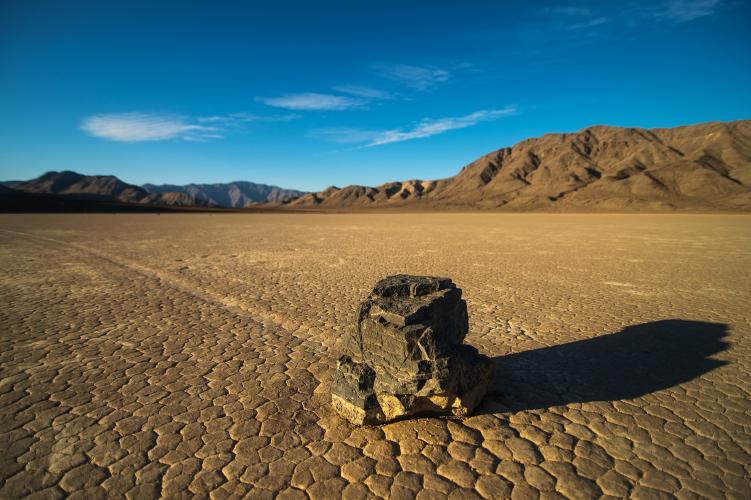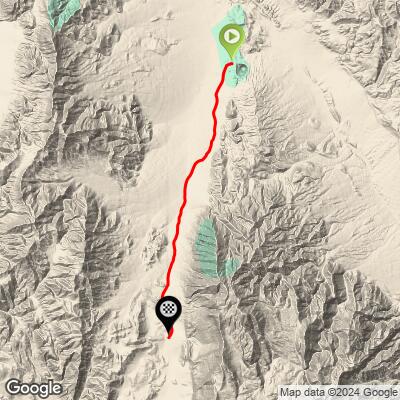![]()
Racetrack Valley Road
Ride Date: | November 2024 |
What we rode: | Scott Addict |
Our tires: | Front: 44mm knobby tire Rear: 40mm knobby tire |
What tires we recommend: | The closest thing to mountain bike tires as you can run. |
What is the surface like?
Like every climb in Death Valley, you’ll encounter a range of surfaces along the same road. We recommend coming prepared with the “beefiest” rig you can run… and a spare tire or two.
It seems like most Death Valley climbs are horrendously bad at the bottom and then actually slowly get better and less rocky towards the top… opposite of your typical gravel road. The reason is because of flooding. The floods are so chaotic and powerful here that every time it rains, all of the roads, especially these back roads that aren’t maintained, are absolutely obliterated by everything that’s on top of the mountains. Knowing the short term history of the weather (at least a few months) and doing your research on park road conditions and closures is critical for riding here.
Just beyond the finish is one of Death Valley’s most remarkable landmarks, as well as one of nature’s most intriguing mysteries: “The Racetrack”. This dry, remote desert lakebed, also known as Racetrack Playa, is famous for its "sailing stones"—large rocks that appear to move across the cracked mud surface, leaving long, winding trails behind them.
![]()
![]()
What makes the phenomenon particularly mysterious is that the rocks move seemingly on their own, with no clear explanation. The arid landscape of the valley only adds to the mystique, with vast stretches of parched ground creating a surreal backdrop for the puzzling tracks.
While no one fully understands why or how these rocks move, the most widely accepted theory involves a combination of specific environmental conditions. Scientists believe that during rare winter rains, a thin layer of water covers the playa, which then freezes overnight into a sheet of ice. As the ice warms and cracks during the day, it breaks into large, floating panels that can push the rocks along the slippery, wet surface with even light winds. This hypothesis was supported by observations in 2014 when researchers used GPS and time-lapse photography to document the phenomenon for the first time. While the mechanics of this process seem plausible, the eerie sight of stones carving their own paths across the desert remains a fascinating and otherworldly spectacle.
Go to nps.gov to learn more about the valley.
![]()

 We've partnered with Sherpa-Map.com to bring you the best route planning tool. With a PRO Membership you can use this climb as a reference when creating your route.
We've partnered with Sherpa-Map.com to bring you the best route planning tool. With a PRO Membership you can use this climb as a reference when creating your route. 

